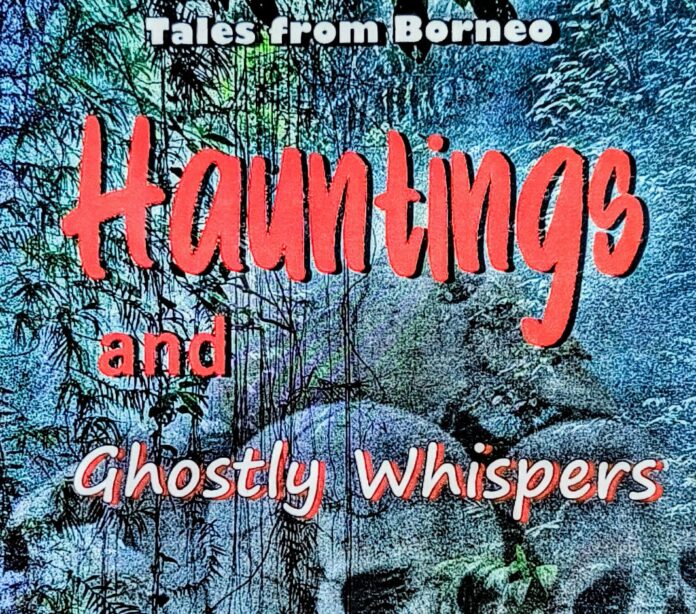Hauntings and Ghostly Whispers
Tales of the Spirit World

Anna Vivienne, a former journalist turned short story writer, has published five printed collections of short stories to date and has two novelettes in progress.
This seasoned author, of Dusun BunduLiwan descent, expresses a desire to continue writing in her preferred genre, with a particular focus on supernatural tales, which she considers her forte.
She stresses however that she is still constantly learning and honing her skills where writing is concerned.
She shares that in a time long past when the world was still young and humanity lived in harmony with the rhythms of nature, extraordinary events became the fabric of folklore, passed down from one generation to the next.
Many of these superstitions evolved into cherished traditions.
In this book, the author meticulously recounts the tales shared with her by her grandparents and parents during her childhood.
These stories became deeply ingrained in her memory, and as an adult, they inspired her to craft the twelve narratives contained within these pages.
The title, Hauntings and Ghostly Whispers, carries a profound significance.
It alludes to the Bobolian, or Shaman, who is perpetually accompanied by her spirit familiar.
The “Ghostly Whispers” refer to the messages conveyed to her by this spirit familiar during specific circumstances or moments of spiritual trance.
The first story, titled “Mobpisok,” explores a traditional practice still observed today, where the spirit of the recently deceased is called for their ‘last supper.’
Following this ritual, the spirit is informed that they are no longer part of the living world and must journey to the netherworld.
This narrative centres on a man who perished in a flood, unaware of his death.
His spirit returns home, not knowing the feast is for him, thus he just watched the many other spirits, whom he thought were real people, enjoying the meal meant for him.
Confused by the indifference of those around him, he lingers in the house, ultimately leading to his spirit haunting the residence, prompting his family to move away.
The second story recounts the fate of a man who ignored the call of the Lokiu Bird, a creature believed to herald death or misfortune.
His disregard results in a tragic accident.
The third tale introduces the Bugang, a spirit bird known for consuming the flesh of those who have died in battle.
A couple narrowly escapes the clutches of this fearsome creature.
The fourth story features a young widow who fails to observe the customs associated with mourning.
Her behavior leads others to believe she has lost her sanity—yet, is that truly the case?
The fifth narrative, “Linisok,” tells of a neglected child who, after being mistreated by her grandmother, finds refuge among the “small people,” spirits residing in grassy hills adorned with stunted bushes.
Historically, these little people have been blamed for the disappearance of children.
The sixth story revolves around a ghost who faithfully awaits her boyfriend at a bus station, unaware that she died in a tragic car accident.
To this day, the bus stop is rumoured to be haunted.
The seventh tale features a wandering ghost, a murder victim buried in a field that has since transformed into a park.
The eighth story highlights a notorious highway that winds around a mountain, believed to be haunted by the spirits of nature who were never appeased, as the road cut through their ancestral villages.
The ninth narrative delves into the taboo of “nopuunan,” which addresses the desires and cravings of individuals who yearn for something but refrain from consuming it.
Those who violate this taboo often face misfortune or even death.
The tenth story explores the Totumolong, the enigmatic little people who inhabit areas near waterfalls and lush jungles with abundant water sources.
These mystical beings are said to have the ability to entice human children to join their world.
The eleventh story delves into the Obingkito, meaning “those who can see spirits.”
This narrative is inspired by a true story, enhanced with dramatic elements to captivate readers.
The final story focuses on the spirits of the jungle, typically found in primary forests, who are displaced as humans clear land for their homesteads.
This poignant tale highlights the impact of human encroachment on these ethereal beings and their natural habitat.
Together, these stories weave a rich tapestry of cultural beliefs and supernatural encounters, inviting readers to reflect on the delicate balance between the living and the spirit world.
Anna Vivienne crafted these stories in simple English, making them accessible to all readers. Interwoven throughout the narratives are depictions of the people’s lifestyles in days gone by.

